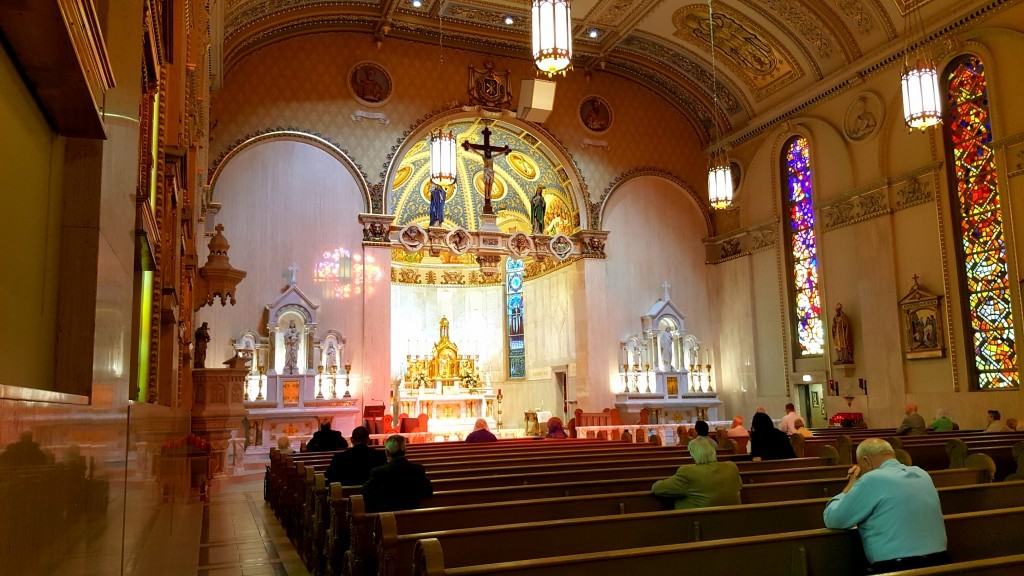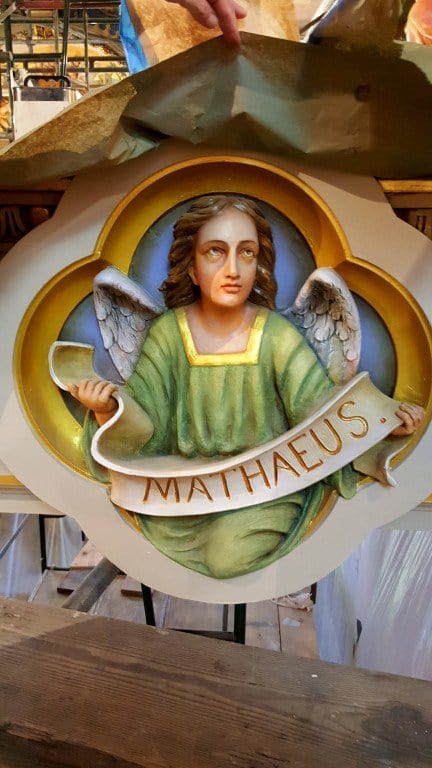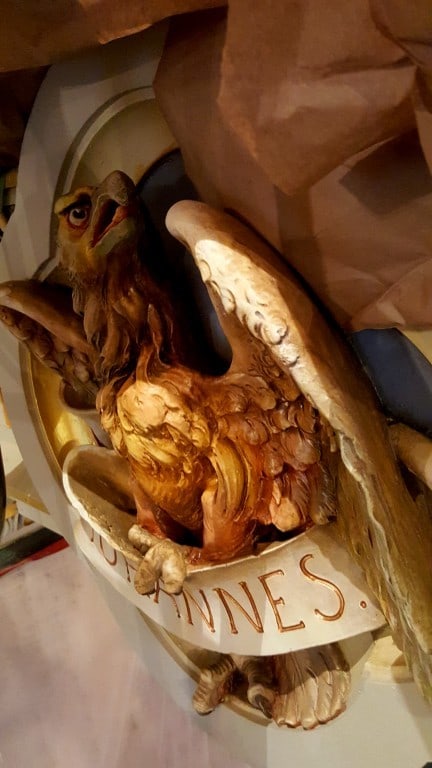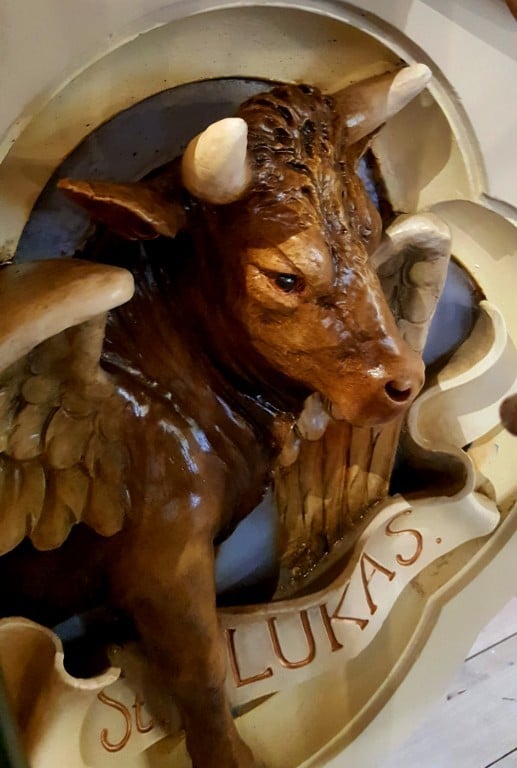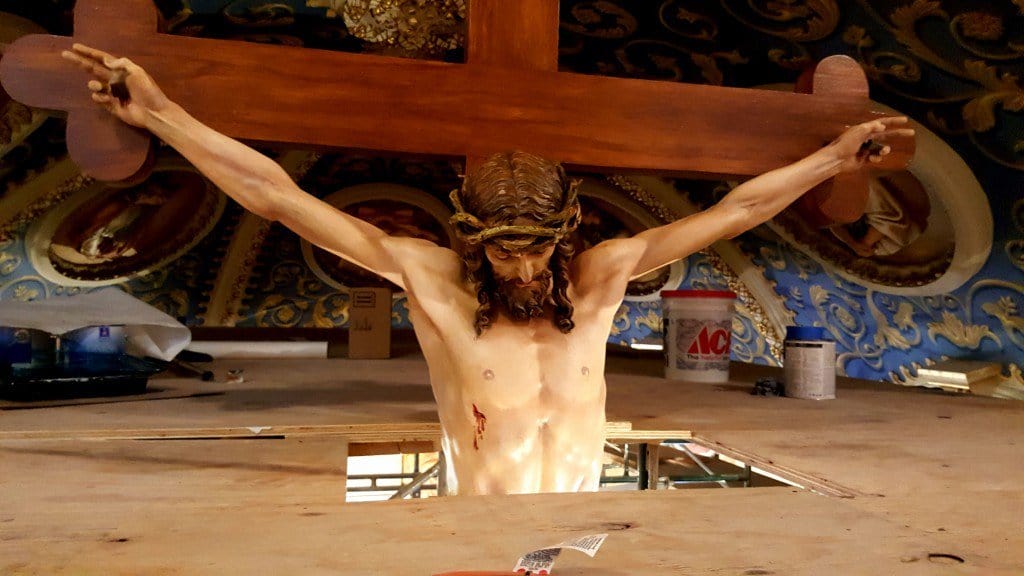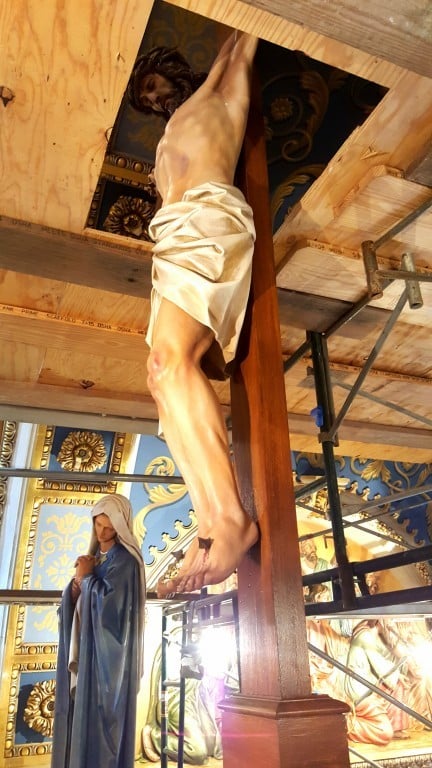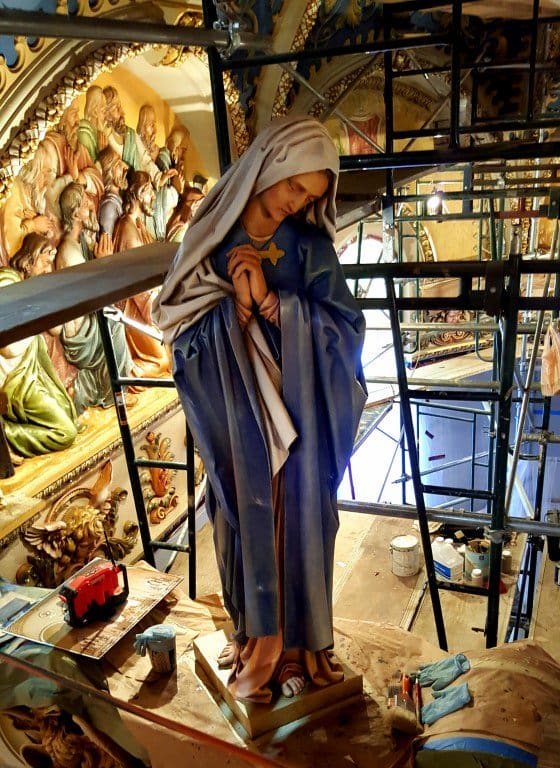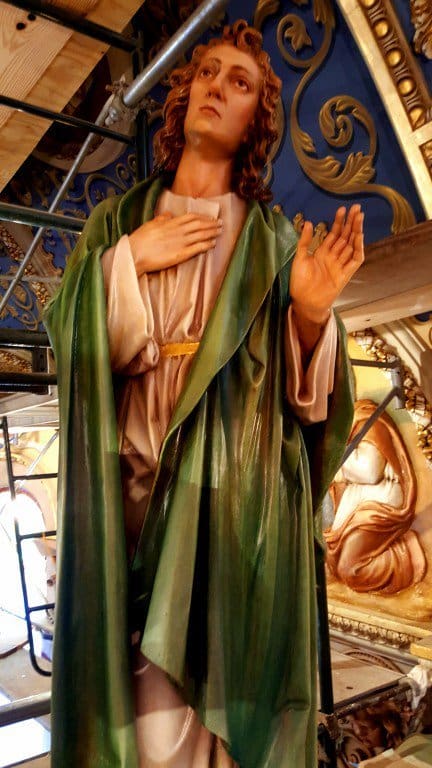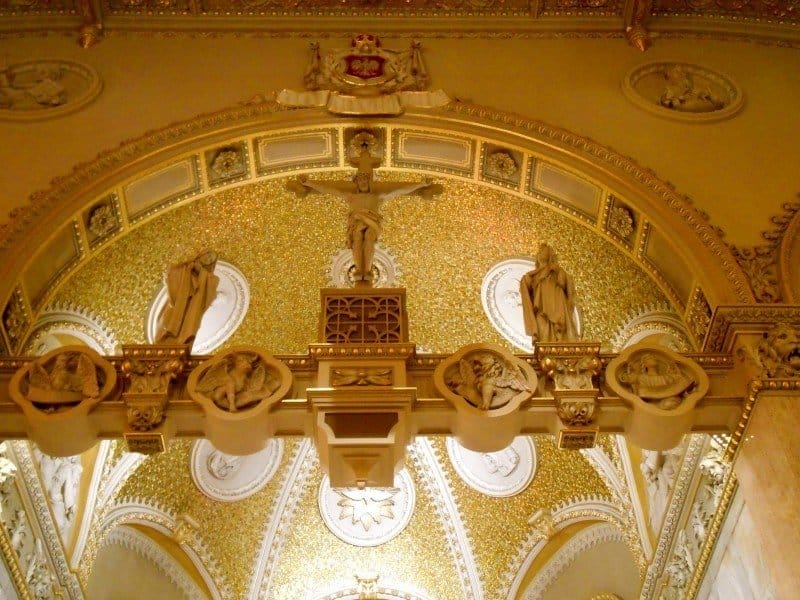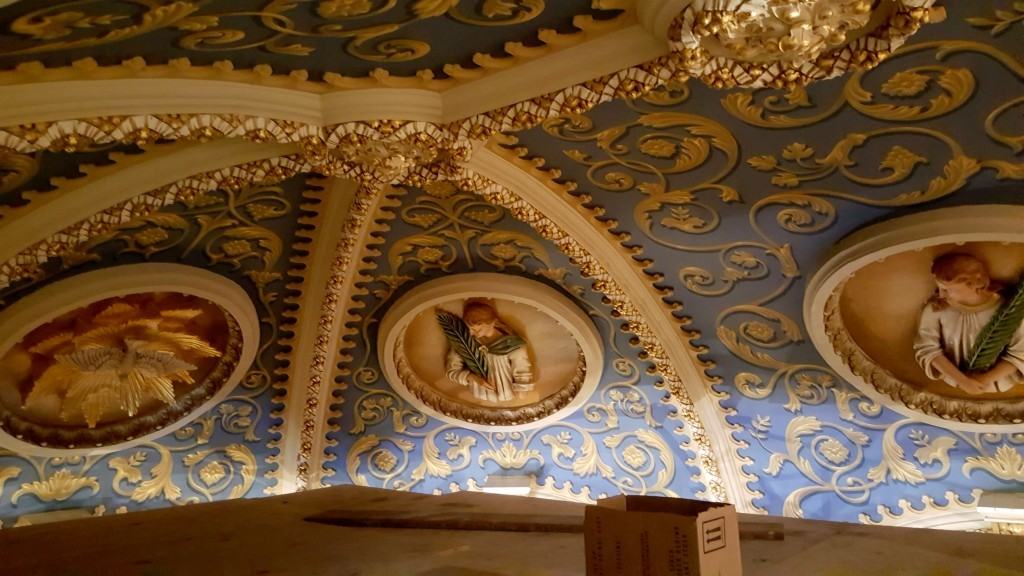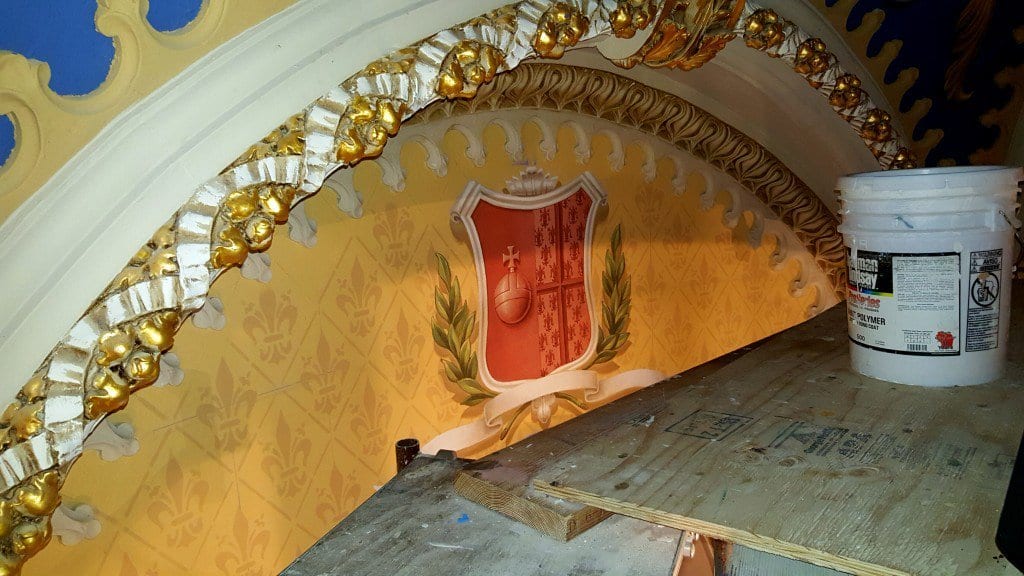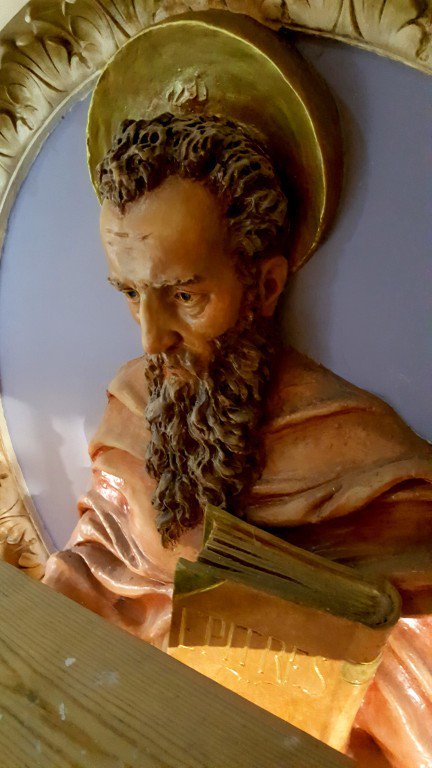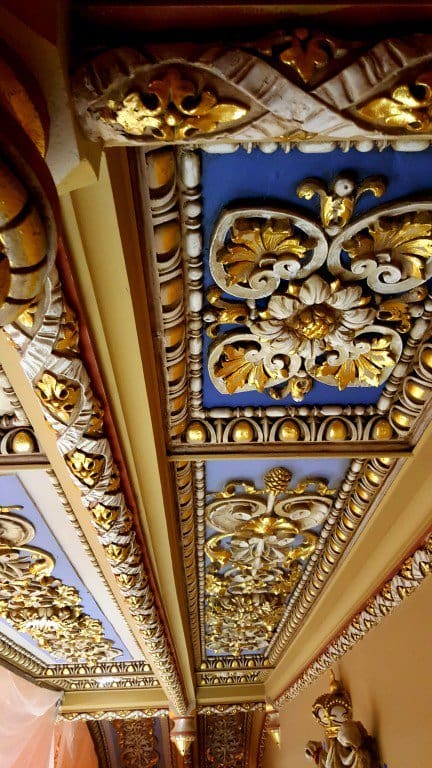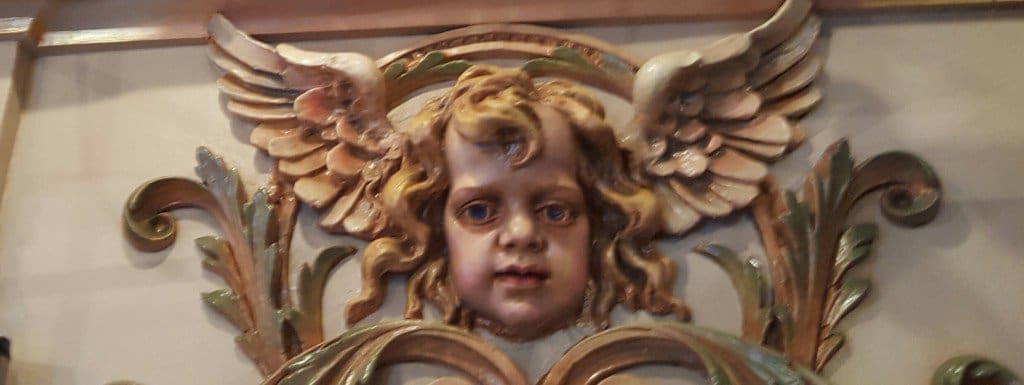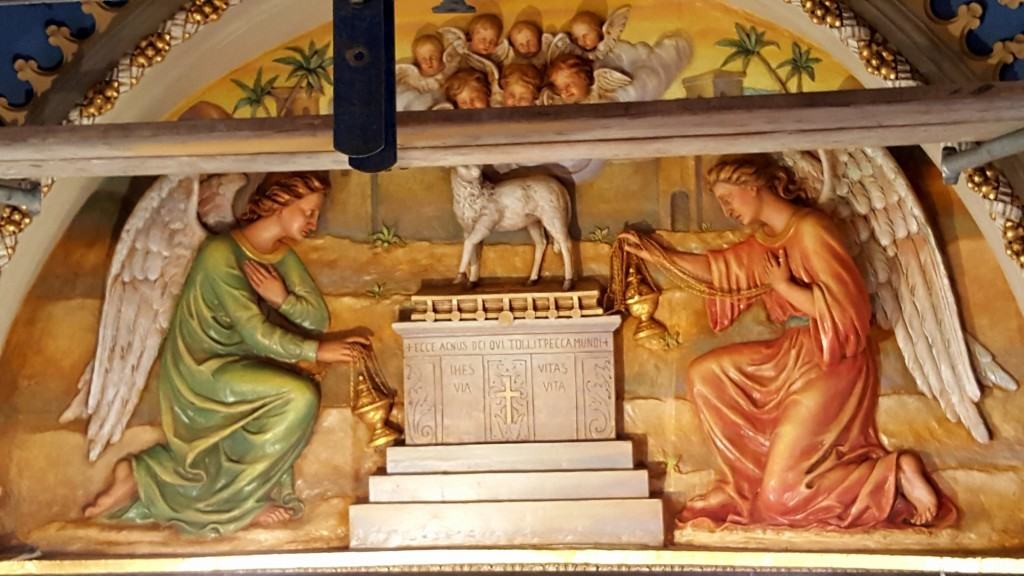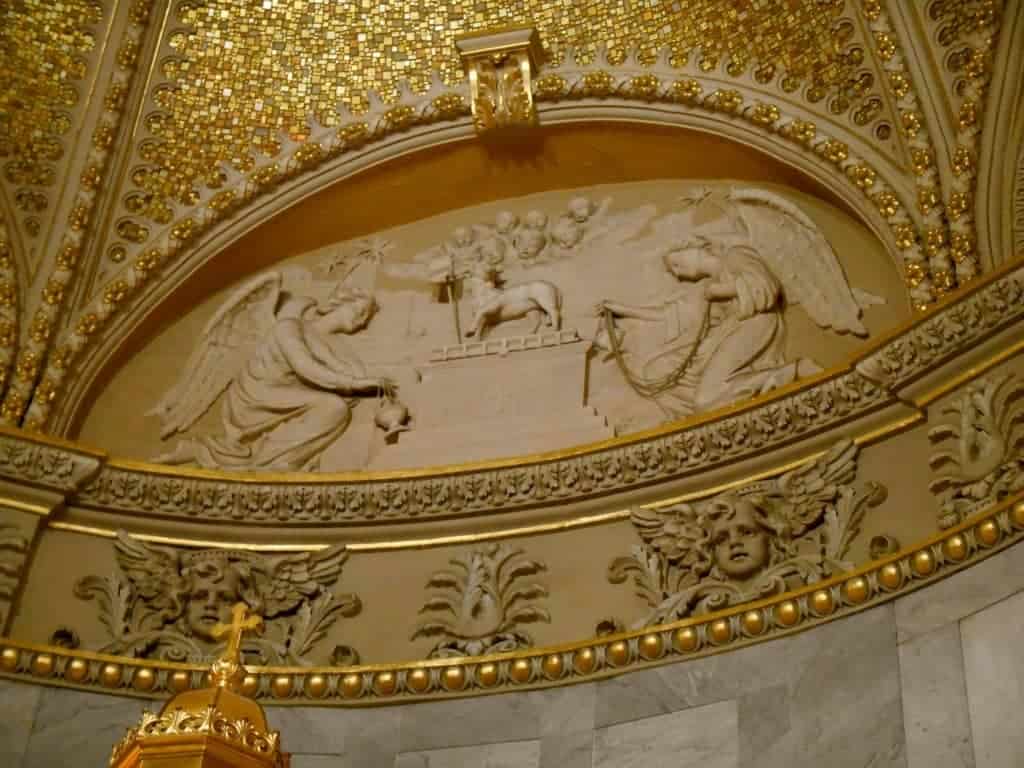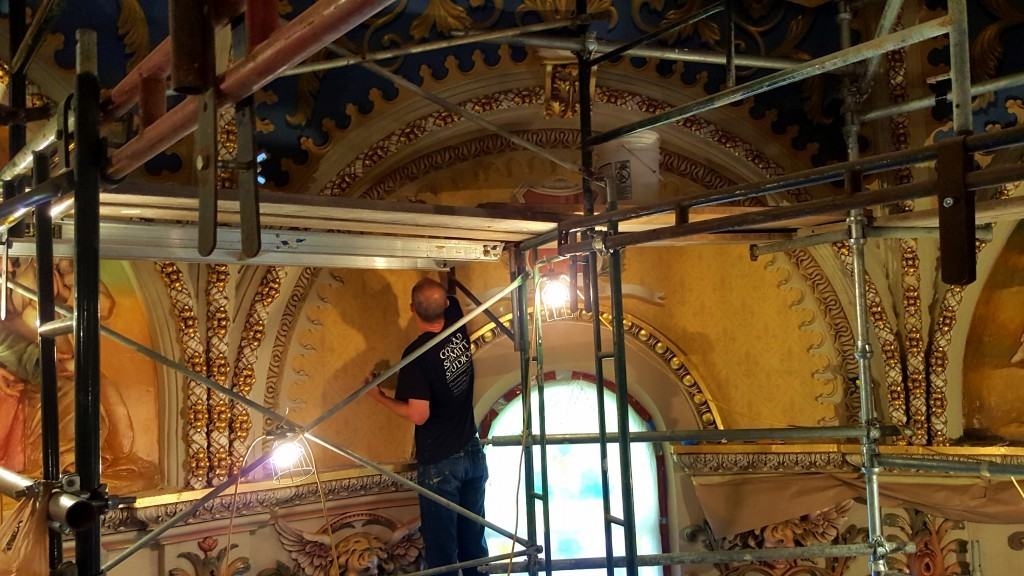After months of anticipation, the enormous wall of scaffolding that filled the sanctuary of Saint Stanislaus Parish has been removed. It was worth the wait. As you can see, the result of the restoration is stunning. Completed in anticipation of the parish’s 150th anniversary in September, the sanctuary restoration project unfolded in several stages over the previous two years. The goal of the work has been to bring back, and even improve upon, the original splendor of this historic building, much of which was painted over (or simply destroyed) during the disastrous renovations of the 1960s. (You can get a good sense of what the church looked like over the years by checking out the gallery page.)
Last year saw the completion of the refurbished ad orientem high altar, made of white marble and green onyx. Shortly after this, two large, traditional stained-glass windows were installed in the sanctuary, replacing the ugly modern windows dating from (you guessed it) the 60s. And just before the scaffolding went up, a Carrara marble Communion rail was installed. The elegant rail, a powerful reminder symbolizing the threshold of heaven, was made in Italy. The last stage of the sanctuary restoration was the detailed painting of the apse and rood screen.
Covered for decades in detail-blurring beige and dust, this sacred space now comes to life as never before in bold colors. Things that were hard to detect earlier (like background palm trees, expressions on the cherubs’ faces, and real chains used for the angels’ thurible) now clearly stand out.
Several weeks ago, while the scaffolding was still up, I scaled the ladders to view the amazing restoration work up-close. The team of artists from Conrad Schmitt Studios Inc. did incredible work. Despite the web of beams, I was able to get some great shots. Given the location of the art, some of the details cannot be seen from the pews, so here’s your chance to soak it all in.
Parishes across the archdiocese hoping to revitalize their communities should take note of what’s happening at Saint Stanislaus. Beauty and tradition are back. Instead of settling for the narrow renovations of rupture rooted in the confused zeitgeist of the past forty years, restorations of tradition rooted in our two-thousand year history should be the guiding principle of parish revitalization.
(Some of the photos are coupled with before shots I took from a few years ago.)


